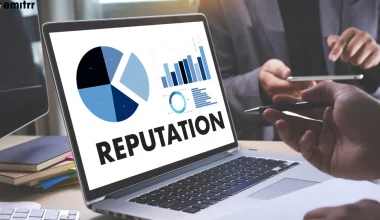Imagine sitting down with your morning coffee, and in just a few clicks, you have a personalized marketing campaign ready to roll. No late nights or endless revisions—just you and a powerful AI assistant transforming your ideas into impactful marketing strategies. Welcome to ChatGPT Marketing space! In this blog post, I’ll dive into what ChatGPT Marketing is, why it’s becoming a game-changer, what makes it unique, and list a few strategies to effectively use it to elevate your marketing efforts. Plus, I’ll share some prompts, first-hand experiences, and real-world examples to illustrate the power of Chatgpt Marketing as an innovative tool. So, let’s get started!
Key Takeaways
- ChatGPT marketing is using ChatGPT, an AI language model, to create, manage, and optimize marketing campaigns. This includes generating content, suggesting strategies, analyzing data, and even interacting with customers.
- ChatGPT significantly boosts efficiency by generating high-quality marketing content in seconds, saving marketers countless hours of brainstorming and drafting. This AI tool enables the quick creation of blog posts, social media updates, and email campaigns, streamlining the entire content creation process.
- ChatGPT offers a cost-effective marketing solution, making it particularly beneficial for small businesses and startups. It reduces the need for a full-time marketing team or expensive outsourcing, delivering high-quality content without significant financial investment.
- Businesses have used ChatGPT to create engaging social media content that boosted engagement, personalize email sequences for abandoned carts leading to higher recovery rates, and produce informative blog articles for improved search ranking.
What is ChatGPT?
ChatGPT is a free informative resource (with encyclopedic knowledge, like Google or Wikipedia—but different, as we’ll see momentarily) that takes the shape of an artificial intelligence (AI) chatbot. So, while you get information from Google by typing a search term into a box and obtaining pages of results, you get information from ChatGPT by conversing. You ask questions, and it generates answers based on your input.
It’s basically a highly advanced chatbot. According to its inventor, Open AI, ChatGPT can “answer follow-up questions, admit mistakes, challenge incorrect premises, and reject inappropriate requests.” Life Architect claims it has other capabilities. For example, it can pass the bar exam, write bills, and earn an MBA.
How Does ChatGPT Work?
While Google and Siri get their information from the web, ChatGPT has its own “brain.” How? As a massive language model technology, it collects vast volumes of text data from the internet, including books, articles, websites, blog posts, and more.
“GPT” refers to a generative pre-training transformer, which means it is trained on huge amounts of text data and employs the GPT-3 method (also known as a transformer algorithm) to generate text that is akin to human conversation. As you can see, with so much data, GPT-3 far outperforms its predecessors in terms of learning parameter count.
Now, let’s get into our main topic of discussion:
What is ChatGPT Marketing?
ChatGPT Marketing refers to leveraging the capabilities of ChatGPT, an advanced AI language model developed by OpenAI, to create, manage, and optimize marketing campaigns. This AI tool can generate content, suggest strategies, analyze data, and even engage with customers—all while learning and adapting to your brand’s voice and objectives.
In my early days of exploring AI tools, I was skeptical about their practical applications. However, when I started using ChatGPT for my marketing tasks, I was blown away by its ability to generate creative content and insightful suggestions. It felt like having a dedicated marketing assistant available 24/7, ready to tackle any challenge.
Why ChatGPT Marketing?
You might be wondering, why should you consider ChatGPT Marketing. Here are a few compelling reasons:
#1. Efficiency and Speed
ChatGPT can generate high-quality content in seconds, saving you countless hours of brainstorming and drafting. According to a survey by McKinsey, companies that implement AI see a 10-15% boost in efficiency across various functions. Imagine having the ability to create blog posts, social media updates, email campaigns, and more with just a few prompts.
#2. Content Creation Powerhouse
Stuck staring at a blank page? ChatGPT can generate fresh content ideas, write product descriptions, craft blog posts, and even whip up catchy social media captions. In my experience working with a small clothing brand, using ChatGPT to brainstorm product descriptions for their new summer line helped them achieve a 15% increase in click-through rates on their website.
#3. Creativity and Personalization
One of the standout features of ChatGPT is its ability to generate creative and personalized content. Whether you need catchy headlines, engaging social media posts, or detailed product descriptions, ChatGPT can tailor its output to match your brand’s tone and style.
I recall a time when I was struggling to come up with fresh ideas for a holiday marketing campaign. I turned to ChatGPT for help, and within minutes, it provided a list of unique and festive ideas that resonated perfectly with our target audience. The campaign was a hit, and it felt like a huge weight had been lifted off my shoulders.
#4. Cost-Effective
Hiring a full-time marketing team or outsourcing content creation can be expensive. With ChatGPT, you get a cost-effective solution that delivers high-quality content without breaking the bank. This is particularly beneficial for small businesses and startups looking to maximize their marketing budget.
#5. A/B Testing on Steroids
Running A/B tests on different ad copy variations or email subject lines can be time-consuming. ChatGPT can help you generate multiple variations quickly, allowing you to test and optimize your campaigns for maximum impact. I also remember a time when I was struggling to come up with compelling headlines for a client’s Google Ads campaign. Using ChatGPT, I generated several variations, tested them, and landed on one that boosted click-through rates by 25%!
What Makes ChatGPT Marketing Unique?
ChatGPT Marketing stands out for several reasons. See infographics below:
Chatgpt Marketing Prompts
Our list contains AI prompts for the following marketing categories:
- Content Marketing
- Email Marketing
- SEO
- Social Media Marketing
- Video Marketing Scripts
Test out these ChatGPT marketing prompts in your next campaign:
- Develop two promotional emails for a conference on digital marketing trends. Cover the following topics: emerging technology, automation, personalization, and data-driven decision-making.
- Explain the marketing segments for [INSERT INDUSTRY]. Outline the potential opportunities within each segment and recommend which one we should target first.
- Write a thirty-second TikTok script for a healthy snack brand. The video script should be funny and appeal to a Gen Z audience.
- Write three Google Ad headlines to take people to this landing page [INSERT URL].
- Re-write this email to appeal to social media marketers [INSERT EMAIL].
- Re-write this Instagram post for Twitter. Keep the post to 250 characters. [INSERT POST].
- Summarize this white paper into bullet points for an Instagram caption [INSERT WHITEPAPER].
- Explain the biggest pain points a buyer in enterprise social media management software has before making a purchase. Follow up with tips for addressing these pain points in our product.
- Write a title tag and meta description for a blog post titled [INSERT TITLE HERE].
- Generate four title options for a blog post about [INSERT TOPICS HERE], use the following keywords in the title [INSERT KEYWORDS].
- Write a social media post about the launch of our new product [DESCRIBE PRODUCT] for [SOCIAL PLATFORM (Instagram, TikTok, etc.)].
- Write a personalized landing page headline that speaks to our ideal customer [INSERT CUSTOMER DETAILS].
- Develop three unique product pitch ideas for a webinar on the topic of [INSERT TOPIC].
- Create four different email subject lines to promote our upcoming webinar on the topic of [INSERT TOPIC].
- Generate five ideas for creating content on Instagram around the topic of [INSERT TOPIC].
Also Read: How To Humanize AI Content: Tricks for Adding Personality and Engagement
- Write three compelling call-to-action messages to use on a landing page for our new product [INSERT PRODUCT DETAILS].
- Develop four unique copywriting headline ideas related to our latest product launch.
- Write five promotional taglines that will attract customers to our website and products.
- Write a chatbot script for a virtual assistant to help customers with product inquiries.
- Write a chatbot script for a customer service representative to handle frequently asked questions and concerns.
- Generate a list of keywords for an SEO campaign related to our latest product launch. Include long-tail keywords and low-competition keywords.
- Write a script for a video ad that promotes our newest product feature.
- Develop three ideas for content to include in an email drip campaign for new customers.
- Generate four possible titles and descriptions for an Instagram post about our company’s brand values, those are [INSERT VALUES].
- Create five pieces of compelling copy that will encourage customers to sign up for our email list.
- Write an Instagram caption for a new iced matcha latte drink our coffee shop is launching for summer.
- Develop four unique concepts for Google ad campaigns that will target customers in the following locations [INSERT LOCATIONS].
- Write a script for an explainer video about our company’s products and services.
- Create a three-month social media campaign outline for a new flavored sparkling water beverage.
- Develop a sales funnel for a new home security system. Include emails, ads, and landing pages that will convert leads into paying customers.
Chatgpt Marketing Strategy
Building a successful marketing campaign requires creativity, strategy, and a deep understanding of your audience. But what if you could leverage the power of artificial intelligence (AI) to streamline the process and unlock new levels of engagement? Enter ChatGPT marketing campaigns – a powerful approach that utilizes ChatGPT, a large language model, to supercharge your marketing efforts.
Planning Your ChatGPT Marketing Campaign Strategy
Here’s a comprehensive guide to crafting a winning ChatGPT marketing campaign:
Step 1: Define Your Goals and Target Audience
The foundation of any effective campaign is a clear understanding of your objectives. Are you aiming to:
- Increase brand awareness?
- Generate leads?
- Boost sales?
- Promote a new product or service?
Once you have a handle on your goals, narrow down your target audience. Who are you trying to reach? Understanding their demographics, interests, and online behavior is crucial for crafting compelling messages with ChatGPT.
Example: Let’s say you’re a small business selling handcrafted jewelry. Your goal might be to increase brand awareness and drive website traffic. Your target audience could be young women aged 22-35 interested in unique, handmade accessories.
Step 2: Brainstorm Content Ideas with ChatGPT
Now, let’s unleash the power of AI! Use ChatGPT to generate a variety of content ideas that resonate with your target audience.
Prompt: “Generate 10 engaging social media post ideas for a handcrafted jewelry brand targeting young women aged 22-35, focusing on the unique stories behind each piece.”
Analyze the ideas ChatGPT provides and choose the most promising ones. You can then use ChatGPT again to refine and expand on those ideas:
Prompt: “Expand on the social media post idea ‘Showcase the craftsmanship behind our latest necklace design with a behind-the-scenes video.’ Include a call to action (CTA) to learn more on our website.”
Step 3: Craft Compelling Content with ChatGPT
Once you have your content ideas locked down, it’s time to create engaging content using ChatGPT. Here’s where you can get specific:
- Blog Posts: Craft informative blog posts about jewelry trends, styling tips, or the stories of your artisans.
Prompt: “Write a 500-word blog post titled ‘The Ultimate Guide to Layering Necklaces’, targeting young women, and highlighting various handcrafted pieces from our collection.”
- Social Media Posts: Use ChatGPT to generate catchy captions, product descriptions, and even scripts for short video content.
Prompt: “Generate 3 creative Instagram captions showcasing a new pair of statement earrings. Use emojis and a call to action to visit our website for a special discount.”
- Email Marketing: Develop personalized email campaigns with targeted messages and product recommendations.
Prompt: “Create a welcome email for new subscribers to our jewelry store. Include a discount code and highlight our most popular collections based on their browsing history.”
Step 4: Personalization with ChatGPT
Personalization is key to standing out in the crowded marketing landscape. Leverage ChatGPT to personalize your content to a deeper level:
- Personalized Subject Lines: Use ChatGPT to generate personalized email subject lines that grab attention and encourage opening.
Prompt: “Craft 5 personalized subject lines for our abandoned cart email campaign, using the customer’s name and the specific jewelry pieces left behind.”
- Dynamic Calls to Action: Tailor your CTAs based on user behavior. For example, a CTA for a website visitor who’s viewed a specific product page could be “Add to Cart” while the CTA for someone who’s just browsing the homepage might be “Explore Our Collections.”
Step 5: A/B Testing for Optimization
Don’t settle for mediocre results! Use ChatGPT to generate multiple variations of your content, such as social media captions, ad copy, or email subject lines. Then, run A/B tests to see which versions resonate best with your audience.
Prompt: “Create 3 different Facebook ad copy variations promoting our summer jewelry collection, highlighting the unique designs and vibrant colors.”
Step 6: Track, Analyze and Refine
The beauty of ChatGPT marketing campaigns is the ability to continuously learn and improve. Track key metrics like website traffic, conversion rates, and social media engagement. Analyze the data to see what’s working and what’s not. Use this information to refine your ChatGPT prompts and optimize your campaigns for maximum impact.
Step 7: Integrate with Existing Tools
For a seamless workflow, consider integrating ChatGPT with your existing marketing tools like email marketing platforms, social media schedulers, and content management systems. Many platforms offer APIs or integrations that allow you to leverage ChatGPT.
Chatgpt Marketing Examples
Let’s look at some real-world examples of ChatGPT Marketing in action:
#1. Social Media Campaign
A small business used ChatGPT to create a series of social media posts for a product launch. The AI-generated engaging captions, hashtags, and visuals captured the audience’s attention. The campaign saw a 30% increase in engagement compared to their previous efforts.
#2. Email Marketing
An e-commerce store implemented ChatGPT to write personalized email sequences for abandoned cart reminders. The AI-generated emails were tailored to each customer’s browsing history, leading to a 20% increase in recovery rates.
#3. Blog Content
A travel blog utilized ChatGPT to produce high-quality articles on various destinations. The AI provided unique insights and detailed descriptions, helping the blog attract more visitors and improve its search engine ranking.
Launching your first ChatGPT marketing campaign can be exciting, but also complex. Streamline the process and avoid launch-day jitters with our downloadable ChatGPT Marketing Campaign Launch Checklist. This free resource guides you through essential steps like setting goals, creating a content calendar, and tracking key metrics for a successful campaign.
Can I use ChatGPT for marketing?
Yes, you can use ChatGPT for marketing! ChatGPT can be used for marketing, among other things. It can help with generating ideas, creating content, and even assisting with customer service.
How to ask ChatGPT to create a marketing plan?
To ask ChatGPT to create a marketing plan, you need to provide clear and specific instructions. Here’s a step-by-step guide on how to do it:
- Define the objective
- Provide context
- Specify key elements
- Ask for a structured response
- Include any additional requests
Will ChatGPT replace digital marketing?
No, ChatGPT will not replace digital marketing. Instead, it serves as a powerful tool that enhances and complements digital marketing efforts.
Can you advertise on ChatGPT?
No. As of now, you cannot directly advertise on ChatGPT in the traditional sense like placing ads on social media platforms or search engines. However, you can leverage ChatGPT for marketing purposes in several effective ways.
Can I sell what I create on ChatGPT?
Yes, you can sell what you create using ChatGPT, but there are a few important considerations and best practices to keep in mind to ensure compliance with OpenAI’s usage policies and ethical standards
Conclusion
ChatGPT Marketing is not just a trend—it’s a revolutionary approach that has the potential to transform how businesses engage with their audience, streamline operations, and achieve their marketing goals. By leveraging the power of AI, marketers can create more personalized, efficient, and impactful campaigns.
So, are you ready to harness the power of ChatGPT Marketing? What innovative ways can you think of to integrate ChatGPT into your marketing strategy?
Related Articles
- 8 Examples of B2B Chatbot & All You Need
- WILL AI REPLACE WRITERS? What You Should Know
- Top B2B Marketing Automation Strategies to Boost Your Business in 2024
- 15 Free Digital Marketing Resources and Tools I Recommend in 2024
- Top 11 Social Media Marketing Agencies for Small Businesses I Recommend in 2024






